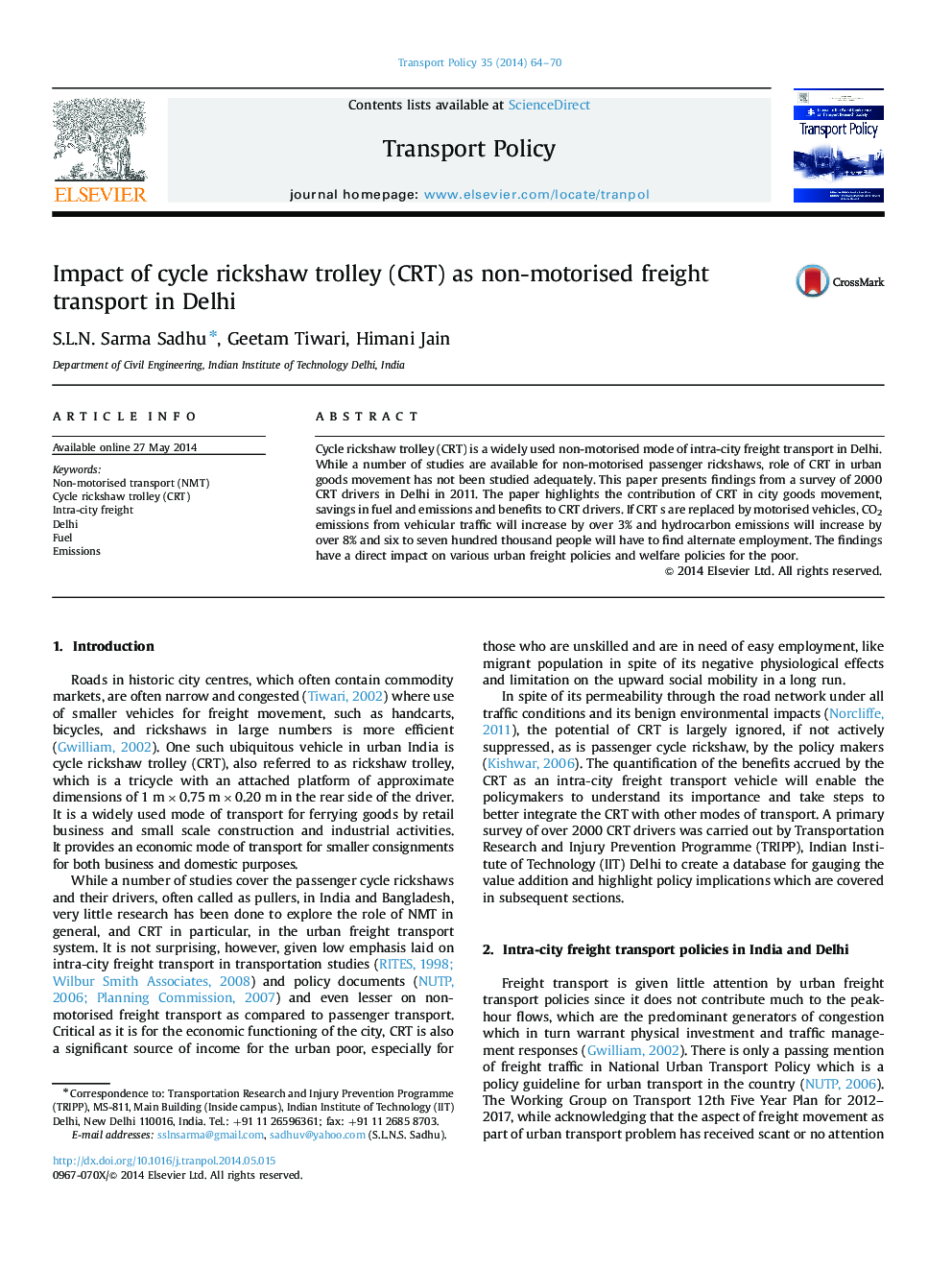| Article ID | Journal | Published Year | Pages | File Type |
|---|---|---|---|---|
| 1064859 | Transport Policy | 2014 | 7 Pages |
•Nearly two million migrants and unskilled poor are dependent on earnings from CRT goods carrier.•CRT saves at least 50 kt of compressed natural gas and reduces 195 kt of CO2 emissions in Delhi.•Motorised goods vehicles impose 155 times higher risk to other road users compared to CRT.•Movement restricting policies have adverse impact on savings of CRT drivers.
Cycle rickshaw trolley (CRT) is a widely used non-motorised mode of intra-city freight transport in Delhi. While a number of studies are available for non-motorised passenger rickshaws, role of CRT in urban goods movement has not been studied adequately. This paper presents findings from a survey of 2000 CRT drivers in Delhi in 2011. The paper highlights the contribution of CRT in city goods movement, savings in fuel and emissions and benefits to CRT drivers. If CRT s are replaced by motorised vehicles, CO2 emissions from vehicular traffic will increase by over 3% and hydrocarbon emissions will increase by over 8% and six to seven hundred thousand people will have to find alternate employment. The findings have a direct impact on various urban freight policies and welfare policies for the poor.
